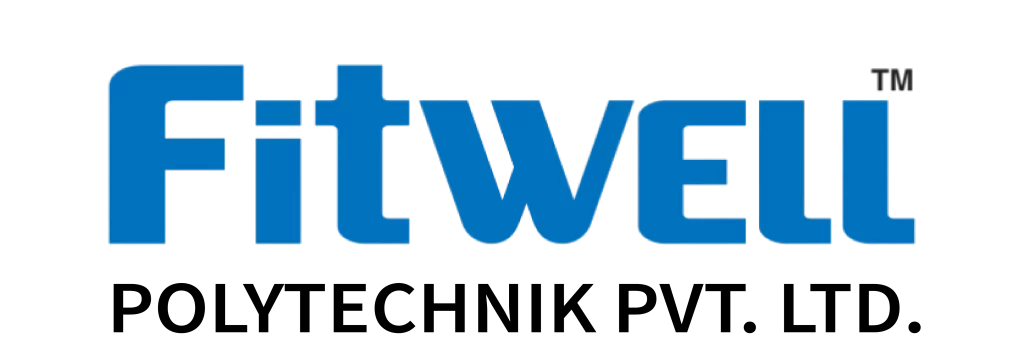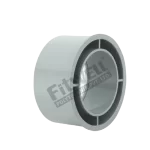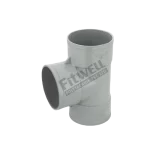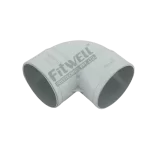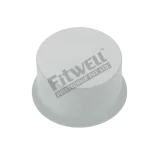uPVC Pipe Fittings: Everything You Need to Know
uPVC pipe fittings are an essential part of modern plumbing and construction. uPVC, or Unplasticized Polyvinyl Chloride, is a strong, lightweight, and cost-effective material used for a variety of piping systems. In this comprehensive guide, we will explore what uPVC pipes and fittings are, their benefits, common types, and why they are a popular choice in the plumbing industry. We’ll also highlight Fitwell, a top uPVC pipes and fittings manufacturer known for quality and reliability.
Quick Overview: What Are uPVC Pipes and Fittings?
uPVC pipes are made from Unplasticized Polyvinyl Chloride, which is a rigid form of PVC. Unlike regular PVC, uPVC does not contain plasticizers, making it more durable and long-lasting. uPVC fittings are connectors used to join different sections of uPVC pipes. They come in various shapes and sizes to allow for versatile plumbing designs, control water flow, and ensure a leak-proof system.
Benefits of uPVC Pipes and Fittings
- Corrosion-Resistant: uPVC pipes and fittings do not rust or corrode, making them perfect for transporting water, chemicals, and gases.
- Long Lifespan: Due to their robust nature, uPVC pipes can last for over 50 years with proper maintenance.
- Non-Toxic: uPVC is a safe material for potable water supply as it does not leach harmful chemicals.
- Cost-Effective: uPVC pipes and fittings are affordable and require minimal maintenance.
- Lightweight and Easy to Install: The lightweight nature of uPVC makes it easy to handle, transport, and install.
What Are uPVC Fittings?
uPVC fittings are the various connectors used in piping systems to join, change the direction of, or close off uPVC pipes. These fittings ensure that pipes are connected securely, allowing for a seamless flow of water or other fluids. The rigid structure of uPVC fittings adds durability to plumbing and drainage systems, ensuring they remain leak-free and efficient.
Manufacturing Process of CPVC Piping Systems
Common Types of uPVC Pipe Fittings
Here are some of the most widely used uPVC fittings:
- Elbows: These fittings change the direction of the pipe, usually at a 90° or 45° angle.
- Tees: Shaped like the letter “T,” they connect three pipes, allowing fluids to flow in two directions.
- Couplings: Used to join two pipes of the same diameter, extending the length of the pipeline.
- Reducers: Connect pipes of different sizes, helping to control the flow rate.
- End Caps: Seal off the end of a uPVC pipe to prevent leaks.
Why Choose uPVC Pipes and Fittings?
When it comes to plumbing, drainage, and water supply systems, uPVC pipes and fittings are the preferred choice due to their unmatched benefits:
- High Chemical Resistance: uPVC is resistant to a wide range of chemicals, making it suitable for both residential and industrial applications.
- Smooth Inner Surface: The smooth interior of uPVC pipes minimizes friction, promoting efficient fluid flow and reducing the risk of clogging.
- Eco-Friendly: uPVC pipes can be recycled, making them an environmentally friendly option compared to other piping materials.
Why Choose Fitwell Pipe Fittings?
- Quality Assurance: Fitwell ensures all its uPVC pipes and fittings meet industry standards, offering products that are safe for potable water supply.
- Variety: Fitwell provides a wide range of uPVC fittings, including elbows, tees, reducers, couplings, and more, making it easy to find the right fitting for your plumbing project.
- Trusted Supplier: As a reputable uPVC pipes and fittings supplier, Fitwell has built a solid reputation for delivering quality products and excellent customer service.
How to Select the Right uPVC Pipes and Fittings
Choosing the right uPVC pipes and fittings is essential for a durable and efficient plumbing system. Here are some tips to help you select the right ones:
1. Determine the Application
Consider the purpose of the piping system. For example, if you’re setting up a drainage system, you’ll need fittings that can handle high-pressure flow and resist chemical corrosion.
2. Select the Correct Size
Ensure the diameter of the fitting matches the diameter of the uPVC pipe. uPVC fittings come in various sizes, so measuring the pipe beforehand is crucial to ensure a secure fit.
3. Check the Pressure Rating
Choose fittings with a pressure rating suitable for the application. For example, drainage systems require different pressure ratings compared to water supply lines.
4. Opt for Quality
Choose a trusted manufacturer like Fitwell Pipe Fittings to ensure you get high-quality, durable products. Poor-quality fittings can lead to leaks and costly repairs down the line.
Installation Tips for uPVC Pipes and Fittings
Installing uPVC pipes and fittings is relatively simple, but following a few guidelines will ensure a leak-proof, long-lasting system:
- Cut Pipes Cleanly: Use a pipe cutter to cut uPVC pipes straight and evenly.
- Deburr Pipe Edges: Remove any burrs from the pipe edges after cutting to ensure a smooth fit.
- Use Solvent Cement: Apply uPVC solvent cement to the pipe ends and the inside of the fittings before connecting them. This creates a chemical bond for a watertight seal.
- Allow Curing Time: After applying solvent cement, give the connection time to cure—usually 15-30 minutes—before using the system.
Applications of uPVC Pipes and Fittings
- Residential Plumbing: Ideal for water supply lines and drainage systems in homes.
- Commercial Plumbing: Widely used in buildings for water supply, drainage, and waste management systems.
- Irrigation Systems: uPVC pipes are perfect for agricultural irrigation systems due to their resistance to chemicals and harsh weather conditions.
- Industrial Applications: Used for transporting chemicals, waste, and other fluids in industrial settings due to their high resistance to corrosion.
Internal Links for More Information
For more insights into pipe fittings, plumbing systems, and how to choose the right products, check out these related articles:
- The Advantages of Choosing Fitwell uPVC Fittings
- How to Install uPVC Pipes and Fittings
- Top Tips for Selecting Quality uPVC Fittings
Conclusion
uPVC pipes and fittings are a durable, cost-effective, and environmentally friendly solution for a wide range of plumbing and industrial applications. Their resistance to corrosion, lightweight nature, and long lifespan make them an ideal choice for both residential and commercial projects. Fitwell Pipe Fittings, a leading uPVC pipes and fittings manufacturer, offers high-quality products designed to meet the needs of various piping systems.
By understanding the types of uPVC fittings and following best practices for installation, you can create a plumbing system that is efficient, leak-proof, and built to last. Choose high-quality products from a trusted supplier like Fitwell to ensure a reliable and efficient piping network.
Stay on the forefront of industry trends by checking out our latest content
Stay ahead with our latest content, designed to keep you informed on the newest industry trends and insights. Discover valuable updates that help you lead in your field.

Trusted uPVC Pipes Manufacturers for India’s Top Contractors
Introduction: The Surge in Demand for uPVC Pipes Among Top Contractors in India The construction and infrastructure sectors in India have witnessed a significant transition toward sustainable and long-lasting materials.
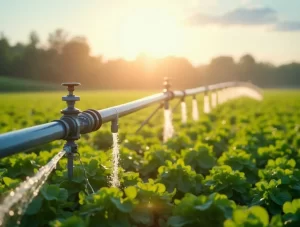
Top Innovations in Agricultural Pipe Fittings for Water Savings [2025]
Introduction to Agricultural Pipe Fittings and Water Sustainability Agricultural pipe fittings play a pivotal role in building efficient irrigation systems, crucial for modern farming practices. By exploring the versatility of

Expeart Tips from MDPE Pipe Fittings Manufacturers to Avoid Failures
Expeart Tips from MDPE Pipe Fittings Manufacturers to Avoid Failures Understanding MDPE Pipe Fittings: An Overview MDPE (Medium Density Polyethylene) fittings, used extensively in gas and water systems, offer strong,
Request a Free Consultation
Get personalized plumbing solutions with a free consultation from Fitwell.
